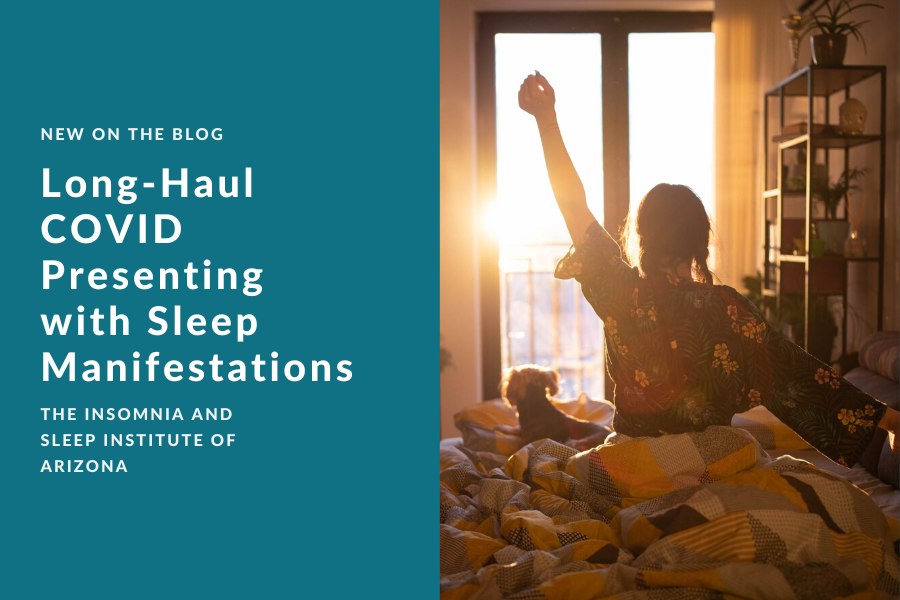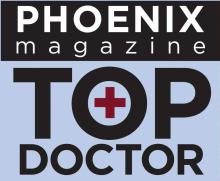COVID-19 and its various strains are still relatively new, so we are just now starting to see how COVID affects other parts of our life—including sleep. At The Insomnia and Sleep Institute of Arizona, we have seen an increase in long-term COVID patients who are also presenting with new or worsening sleep disorders. The same is true of sleep clinics around the globe. Recently, the case of a 69-year-old man with long COVID (defined as symptoms lasting over four weeks) newly presented with a rapid eye movement (REM) sleep behavior disorder. This is making news amongst sleep experts because of how critical it is to consider manifestations of long COVID and how it might influence sleep medicine.
REM sleep behavior disorder, otherwise known as RBD, occurs when there are strange behaviors that happen during the stage R of sleep. This can lead to injuries as well as, of course, sleep disruptions. RBD can also bother bedmates and can even lead to neurodegenerative diseases if not managed. RBD can also cause electromyography (EMG) abnormalities during this phase of sleep. EMG abnormalities include too much muscle tone or twitching during REM. There are many conditions known to trigger RBD, as well as medications.
The Case at Hand
The man who developed RBD was already diagnosed with obstructive sleep apnea (OSA) as well as coronary disease, which are common co-morbidities. He had been using CPAP therapy for the past five years consistently, which is the gold standard in OSA management. During a sleep evaluation, as he routinely sees sleep doctors for his OSA management, he mentioned he had COVID even though he was fully vaccinated. However, he did not seek medical attention for the infection. The same month that he tested positive for COVID, he also had “nightly violent dreams.” His wife said he was screaming and kicking while asleep. She was not injured and there was no change in medications. He also didn’t sleepwalk or present with restless legs.
Due to the parasomnia event, he had a reiteration study in the lab. The findings were that he had reduced sleep efficiency of over 61 percent. His sleep was fragmented by an increase of over 71 percent. Researchers also noted limb movement at a high count in both REM and non-REM sleep. The patients said he didn’t have any tremors, issues with his gait, or any new trauma. He was prescribed clonazepam at night and an MRI imaging to rule out certain other disorders. Two weeks later, he self-reported a lessening of nocturnal events.
Are COVID and RBD Related?
Sleep experts are just beginning to study the relationship between COVID and potential sleep disorders. Right now, there is no other report that links RBD with COVID. Still, the authors of the study say that such an association may be seen more often in the future—there is simply no way to tell. The patient has no other lingering COVID manifestations, and while the MRI did show nonspecific hyper intense foci at the pontine area, there was no other foci found elsewhere.
It has been known for months now that “brain fog” is a common symptom in long COVID. It can be especially debilitating, but also mimics a popular condition with those who don’t get enough sleep. The RBD patient is doing better and controlling nighttime events with clonazepam, but his doctors are still curious how the manifestation of a neurodegenerative disease might be related to the parasomnia event. “He will require indefinite neurologic follow-up,” says his doctors. They consider the medication safe given his “violent behavior” without it. The patient is also committed to continuing to use his CPAP correctly, as he has done (typically over 9 hours per night) since it was prescribed.
Whether or not you have had COVID or long COVID, if you have noticed a negative change in your sleep it is important to see a sleep doctor immediately. Failure to get a diagnosis and, in turn, treatment or management plans can seriously and negatively affect every part of your life. To schedule a consultation with a sleep expert, contact The Insomnia and Sleep Institute by calling the clinic or completing the online contact form.





